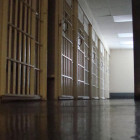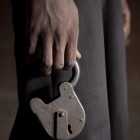

An 11-year-old denied making a threat and was allowed to return to school. Tennessee police arrested him anyway.
|
In late September, Torri was driving down the highway with her 11-year-old son Junior in the back seat when her phone started ringing.
It was the Hamilton County Sheriff’s deputy who worked at Junior’s middle school in Chattanooga, Tennessee. Deputy Arthur Richardson asked Torri where she was. She told him she was on the way to a family birthday dinner at LongHorn Steakhouse.
“He said, ‘Is Junior with you?’” Torri recalled.
Earlier that day, Junior had been accused by other students of making a threat against the school. When Torri had come to pick him up, she’d spoken with Richardson and with administrators, who’d told her he was allowed to return to class the next day. The principal had said she would carry out an investigation then. ProPublica and WPLN are using a nickname for Junior and not including Torri’s last name at the family’s request, to prevent him from being identifiable.
When Richardson called her in the car, Torri immediately felt uneasy. He didn’t say much before hanging up, and she thought about turning around to go home. But she kept driving. When they walked into the restaurant, Torri watched as Junior happily greeted his family.
Soon her phone rang again. It was the deputy. He said he was outside in the strip mall’s parking lot and needed to talk to Junior. Torri called Junior’s stepdad, Kevin Boyer, for extra support, putting him on speaker as she went outside to talk to Richardson. She left Junior with the family, wanting to protect her son for as long as she could ...

Reconsidering Life Sentences for Juveniles who Kill
|
In the 1993 book "Dead Man Walking,” Sister Helen Prejean tells the story of people directly impacted by capital punishment – convicted murderers counting down to their own executions, wardens and guards dutifully operating the machinery of death, and victims who are consumed by rage and grief. Prejean’s book, upon which the popular movie was based, is much more than a memoir. Well-researched and annotated, it carefully explores the legal, ethical and philosophical issues raised by the most controversial form of punishment in the United States. But the power of the book comes from its candor – from the fact that Prejean began her journey without a clear perspective or opinion on the death penalty. I read "Dead Man Walking" when it was first published. I had recently graduated from law school and was clerking for an appellate court judge. Although only vaguely interested in criminal law, I finished it quickly, engrossed by Prejean’s account of her experiences as a spiritual adviser for men on death row and moved by her struggle to find common ground with the families of victims.
I thought of this last weekend after reading Ethan Bronner’s article in The New York Times on reactions to Miller v. Alabama, the 2012 U.S. Supreme Court decision holding that mandatory life without parole sentences for juvenile offenders are unconstitutional. With more than 2,000 offenders across the country who may be resentenced as a result of Miller, Bronner focused on a single case – a pregnant teen killed by her 15-year-old boyfriend – and prominently featured an interview with the victim’s sister, Bobbi Jamriska, who is active in the National Organization of Victims of Juvenile Lifers. Unlike Prejean’s book, but typical of most coverage of criminal sentencing, the Times article explicitly pits juveniles serving life sentences against victims’ families; it asserts without attribution that the decision in Miller threw "thousands" like Jamriska into "anguished turmoil at the prospect that the killers of their loved ones may walk the streets again.” Such hyperbole only perpetuates the notion that the ideal resolution is always to warehouse young offenders – without opportunity for review of their sentences – forever. I do respect Mr. Bronner’s work, but I don’t agree with the way he handled this piece and I told him so.

Pennsylvania Amends Juvenile Murder Sentencing
|
Pennsylvania’s General Assembly last week, on the last day of its session, voted to end the automatic life without parole for teens convicted of first- or second-degree murder. But some advocates say the new scheme misses the point of real reform. Senate Bill 850 sets the minimum sentence for first-degree murders committed by 15- to 17-year-olds at 35 years. For younger teens, it’s 25 years. New second-degree murder minimum sentences would be broken up in the same tiers: 30 years for older teens; 20 for younger ones.

Community Key to Reducing Youth Gang Violence, Expert Says
|
Community Involvement, Relational Networks Key to Reducing Youth-Related Gang Violence in Los Angeles, says City’s Head of Gang Reduction and Youth Development Office
“Youth in a very diverse environment continue to solve conflicts through violence,” said Guillermo Céspedes, director of the Mayor’s Office of Gang Reduction and Youth Development for the City of Los Angeles. “We kept doing the same thing and expecting a different result.”
Céspedes was the keynote speaker for Thursday’s “Improving Citizen Security in Central America: Options for Responding to Youth Violence” event at the Woodrow Wilson Center in Washington, D.C. He said that gang culture is “embedded in the identity of the city,” with many residents displaying a “certain unconscious pride” about Los Angeles being considered the “gang capital of the world.”
“LA has, documented, roughly 450 gangs within the boundaries of the city and 45,000 documented gang members” he said. “If we include the county, the whole county region, those numbers double.”
Prior to 2007, the City of Los Angeles primarily focused on community-based approaches and youth gang services, Céspedes said. Frequently, he said that law enforcement used “very aggressive” strategies, such as the controversial Community Resources Against Street Hoodlums (CRASH) and Operation Hammer programs to combat gang violence. “I work very closely with law enforcement, especially with the chief of police,” he said.

Massachusetts Leans toward Juvenile Hall for 17-year-olds
|
Massachusetts looks likely to raise the age of criminal jurisdiction to 18 next year, and may make more changes as nearly simultaneous new rules from the federal government, a U.S. Supreme Court decision and a report from the state’s Child Advocate nudge Boston lawmakers toward more reforms.
“I think there’s a lot of support” to raise the age, said state Rep. Kay Khan (D-Newton), chair of the Joint Committee on Children, Families and Persons with Disabilities, as well as House sponsor of an age-raising bill that passed House and Senate committees this year. Right now, Massachusetts reserves juvenile proceedings for those under 17. Khan’s House Bill 450 simply replaced the word “seventeen” with “eighteen.”
“I’ll be working on that pretty steadily and heavily. It just doesn’t make any sense not to do that,” said Khan. That work comes as the U.S. Supreme Court and judges in state courts are more often echoing advocates for more flexibility in youth sentencing, on an argument that youths are still developing mentally and more capable of reformation than adults.

Juveniles with Mandatory Life Sentences Should be Resentenced
|
The recent decision (reported here by the L.A. Times) by the U.S. Supreme Court to ban mandatory juvenile life without parole has been rightly celebrated as a victory by activists and others interested in progressive policies. The ruling has left many scratching their heads in its wake though, mostly because the court ruled the sentences unconstitutional, but did not directly assign a process for revisiting the cases, many of which are decades old. A few opponents to the ruling are even contending that it cannot be applied retroactively. Youth Radio interviewed Jennifer Bishop, the President of the National Organization of Victims of Juvenile Lifers. Ms. Bishop, who has previously written for JJIE, is a victims’ rights advocate whose group focuses on those most affected by juvenile murderers: families.

More Than 1,200 Boy Scout Files on Alleged Molesters Released Online
|
Earlier today, some 1,247 Confidential Files on people banned from the Boy Scouts of America for alleged sexual misconduct with children from 1965-85 were put online in fulfillment of a court order in Oregon. Their release comes a week after a Seattle attorney released a database that describes nearly 2,000 abuse cases in the BSA from 1971-91. For complete coverage and analysis, visit Youth Today, featuring in-depth reporting from Patrick Boyle, the author of Scouts’ Honor: Sexual Abuse in America’s Most Trusted Institution and a former editor of Youth Today.



